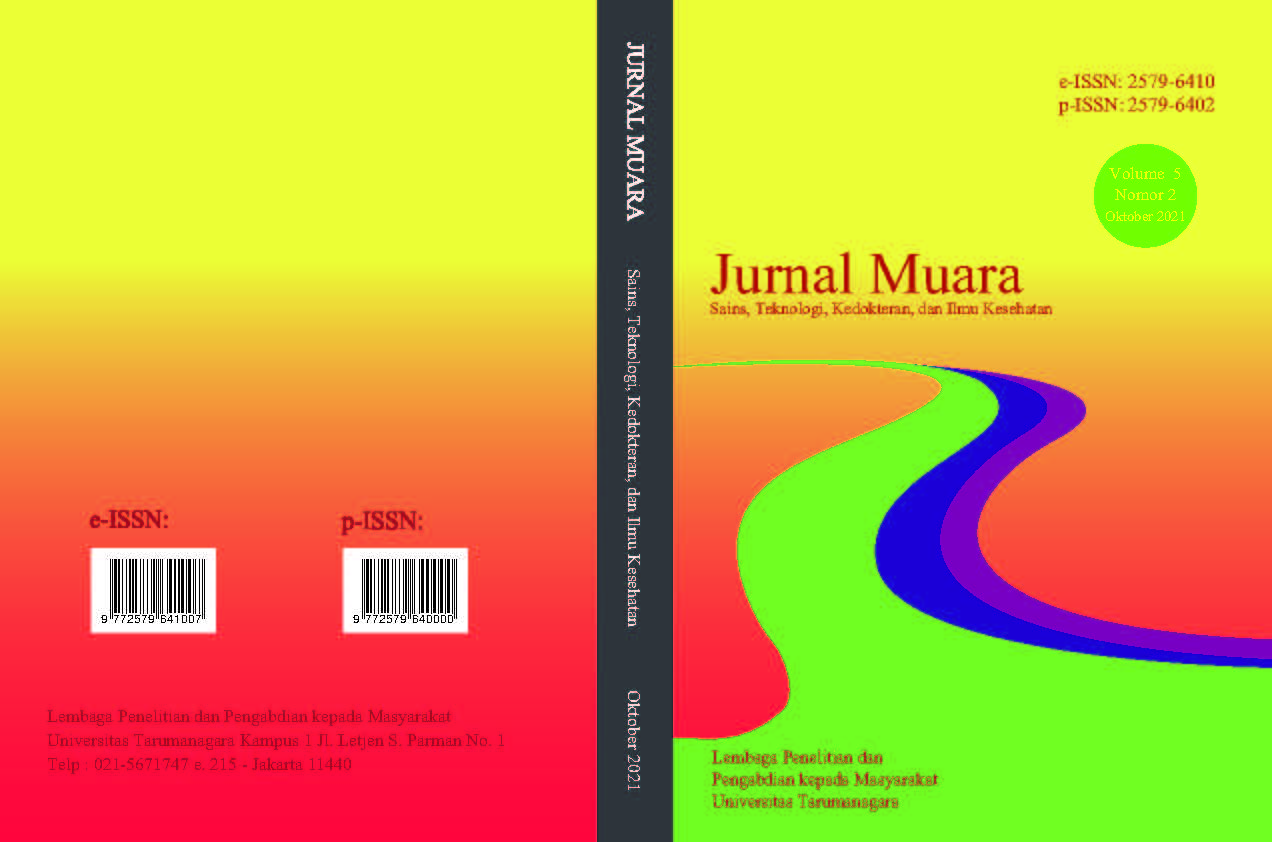STABILITAS PELAT ORTHOTROPIK AKIBAT BEBAN LEDAKAN FRIEDLANDER DAN BEBAN IN-PLANE
Main Article Content
Abstract
Slab behavior due to static and dynamic load needs to be considered when designing a slab. Friedlander is one of the examples of dynamic loads. This dynamic load can give different responses on slab. This research discusses about orthotropic plate on Pasternak foundation with fixed boundary condition and in-plane and Friedlander load. Three phases on Friedlander load are positive phase, negative phase, and free vibration phase. This research is conducted to find out critical buckling load due to variation of Pasternak foundation parameters which is spring coefficient and shear coefficient. The system responses are deflection and bending moment due to variation of Pasternak foundation parameter, critical loading, position of loads, depth of soil, and duration of positive phase. Analysis is carried out using Modified Bolotin Method to obtain natural frequencies and mode shape of the system. Result of this research are displayed in graphics and tables. Based on the results, the maximum limit of the critical compressive load is 77% of the critical load used. The increasing of soil coefficient, the greater the deflection that occurs. The position of the load that is close to the center of the span will make the deflection even greater. The deflection that occurs is greater when the depth of the soil increases and the duration of the blast load is getting longer. The greater the thickness of the plate, the smaller the deflection.
Keywords : Modified Bolotin Method, Friedlander blast load, plate deflection, critical load, Pasternak Foundation
Abstrak
Perilaku pelat akibat adanya beban statik dan beban dinamik perlu menjadi pertimbangan pada saat mendesain pelat. Salah satu contoh beban dinamik adalah beban ledakan setempat (Friedlander). Beban dinamik dapat memberikan respon yang beragam pada pelat. Penelitian ini membahas mengenai pelat orthotropik di atas pondasi Pasternak dengan kondisi jepit dengan beban in-plane dan beban ledakan setempat (Friedlander). Beban ledakan setempat (Friedlander) dianalisis dalam tiga fase yaitu fase positif, fase negatif, dan fase getaran bebas. Penelitian dilakukan untuk mengetahui beban tekuk kritis akibat variasi koefisien pondasi Pasternak yaitu koefisien pegas dan koefisien geser. Respons sistem yang diamati adalah lendutan dan momen yang dihasilkan akibat adanya variasi terhadap parameter pondasi Pasternak, besaran beban kritis, posisi beban, kedalaman tanah, dan durasi fase positif beban. Analisis dilakukan dengan Modified Bolotin Method untuk mendapatkan frekuensi alami dan ragam getar yang terjadi. Hasil analisis akan dibandingkan dalam bentuk grafik dan tabel. Berdasarkan hasil penelitian, batas maksimum beban tekan kritis adalah 77% dari beban kritis yang digunakan. Koefisien tanah yang semakin besar akan membuat lendutan yang terjadi semakin besar. Posisi beban yang mendekati tengah bentang akan membuat lendutan semakin besar. Lendutan yang terjadi semakin besar apabila kedalaman tanah semakin meningkat dan durasi beban ledakan yang semakin lama. Apabila semakin besar tebal pelat maka lendutan yang terjadi semakin kecil.
Article Details
This work is licensed under a Jurnal Muara Sains, Teknologi, Kedokteran dan Ilmu Kesehatan Creative Commons Attribution-ShareAlike 4.0 International License.
Authors transfer copyright or assign exclusive rights to the publisher (including commercial rights)
References
Gibigaye, M, et al. (2015). Dynamic Response of a Rigid Pavement Plate Based on an Inertia Soil. International Scholarly Research Notices, 2016(1), 1-9.
Moon, N. N. (2009). Prediction of Blast Loading and Its Impact on Buildings. National Institute of Technology.
Ngo, T., Mendis, P., Gupta, A., & Ramsay, J. (2007). Blast Loading and Blast Effects on Structures – An Overview. Electronic Journal of Structural Engineering, EJSE Special Issue: Loading on Structure, 7, 76-91.
Susler, et.al. (2012). The Nonlinear Dynamic Behavior of Tapered Laminated Plates Subjected to Blast Loading. Shock and Vibration, 19(6).
Szilard, R. (1974). Theory and Analysis of Plates: Classical and Numerical Methods. Prentice Hall, Inc., New Jersey.
Szilard, R. (2004). Theories and Applications of Plate Analysis: Classical, Numerical, and Engineering Method’s. John Wiley & Sons, Inc., New Jersey.
Timoshenko, S. (1955). Strength of materials, part I Elementary Theory and Problems. Robert E. Krieger Publishing Company, Huntington, New York.



